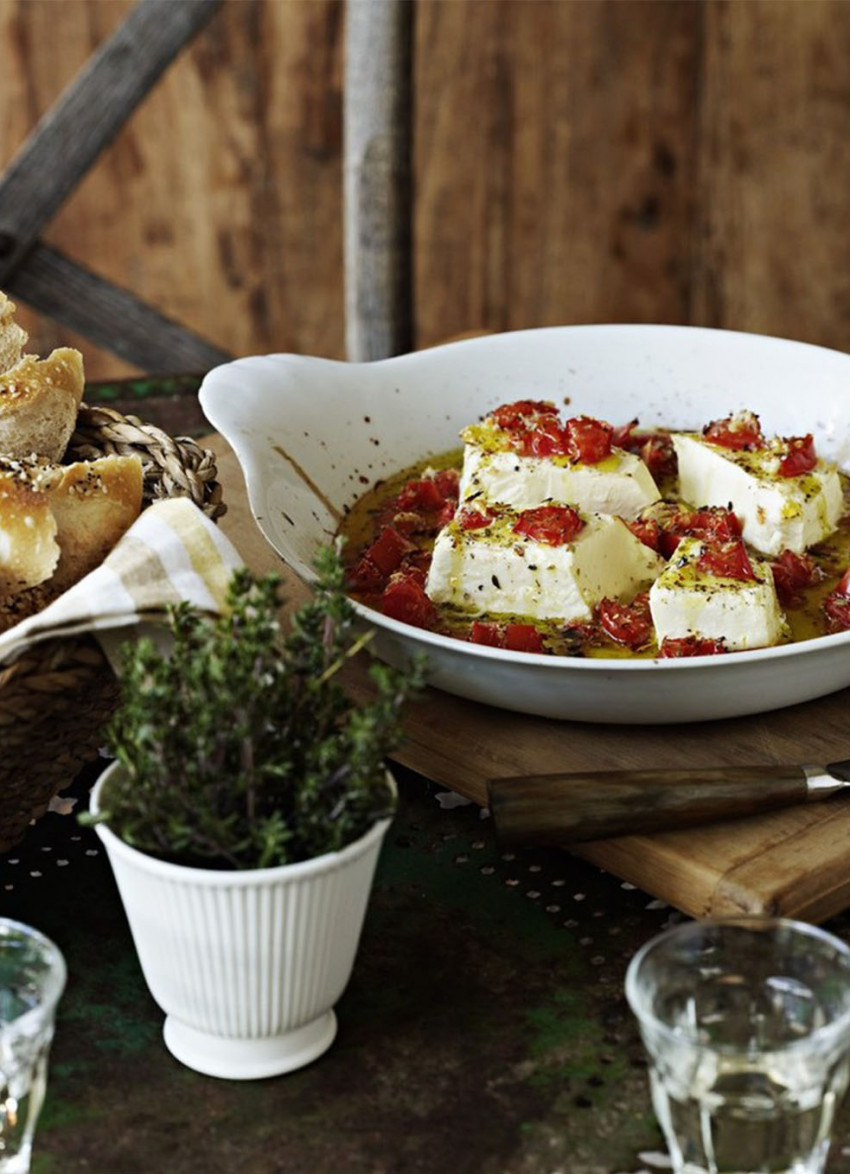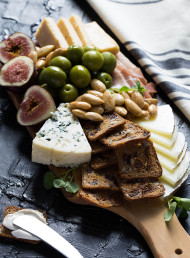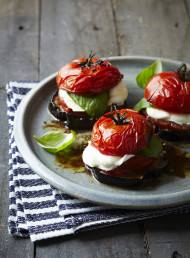Stories of cheese: A fetish for feta

For those used to seeing sheep ankle-deep in grass and clover, it is hard to imagine how they survive, let alone produce milk for cheese.
Indigenous sheep and goat thrive on a diet of wild thyme, marjoram, native flowers and tenacious grasses, inhabiting some of the most hostile climates in Greece. It's here that they produce some of the sweetest, thickest, aromatic milk in the world.
Feta belongs to the fresh cheese category, which means it has no rind, a high moisture content and a relatively low fat content. Aged in barrels of brine or strong salty water for around two months, feta has a firm, compact yet easily crumbled texture, a strong, salty finish and a complex flavour from the aromatic grazing. Pure ewes’ milk feta feels rich and creamy with a taste reminiscent of roast lamb. If the cheese is predominately goats’ milk, it has a lemony freshness that hints of wild herbs and white wine, with a slightly goaty, gamey finish.
When I was looking for samples of feta to taste for this article, I found eight different products made with cows’ milk – all of which, I ignored. Authentic feta should only be made with sheep or goats milk. Cows’ milk tastes fattier and feels slightly greasy when preserved in brine or salt. New Zealand cows' milk feta is often not preserved in salt at all – the complete antithesis of authentic Greek feta and the subsequent reason the Greeks were so determined to protect their heritage.
To put it simply, it would be like making bacon and egg pie with short crust instead of puff pastry – sure, it might taste ok, but it certainly isn't bacon and egg pie.
The cheeses we tasted, made with goat or ewes’ milk, varied enormously, but one stood head and shoulders above the rest. Tussock Creek Feta made by Blue River Dairy, with its classic crumbly texture, fresh acidity, pleasantly salty tang – if you want less salty feta, just soak what you need in cold water for 10 minutes or so – and hints of crushed brazil nuts and caramelised onions. Started in 2003 with a handful of East Friesland and Pole Dorset sheep, there are now over 14,000 ewe sprawled over a number of farms in Southland, grazing on lush grass with the odd pocket of tussock. Another authentic feta to look out for are the Bulgarian goat and ewes' milk variety, both are widely available across New Zealand.
In Greece, the average person will consume close to 12 kilograms of feta a year – the highest consumption in the world. Traditionally, Greek feta is used in pastries, pies, salads or combined with fresh or cooked vegetables. Feta doesn't dissolve completely when baked or grilled, giving this cheese a lightness when added to endless Greek dishes.
Authentic feta has earned its dependable reputation. I suggest you keep a tried and true block in the fridge, should you ever need to create something special for those unexpected guests or family invasions.
To read more about cheese master Juliet, see her website, The Cheese Web.
latest issue:
Issue #120
As the days become shorter, and the nights cooler, the latest issue is perfectly timed to deliver delicious autumn dishes. From recipes using fresh seasonal produce such as feijoas and apples, to spectacular soothing soups and super-quick after-work meals in our Food Fast section, we’ve got you covered. With Easter on the horizon, we feature recipes that will see you through breakfast, lunch and dinner over a leisurely weekend holiday, and whip up chocolatey baking treats sure to please. We round up delicious dinners for two and showcase a hot new Korean cookbook before heading south to Dunedin to check out all that’s new in food and dining.The latest issue of dish is on sale NOW at all good bookstores and supermarkets – don’t miss it!





